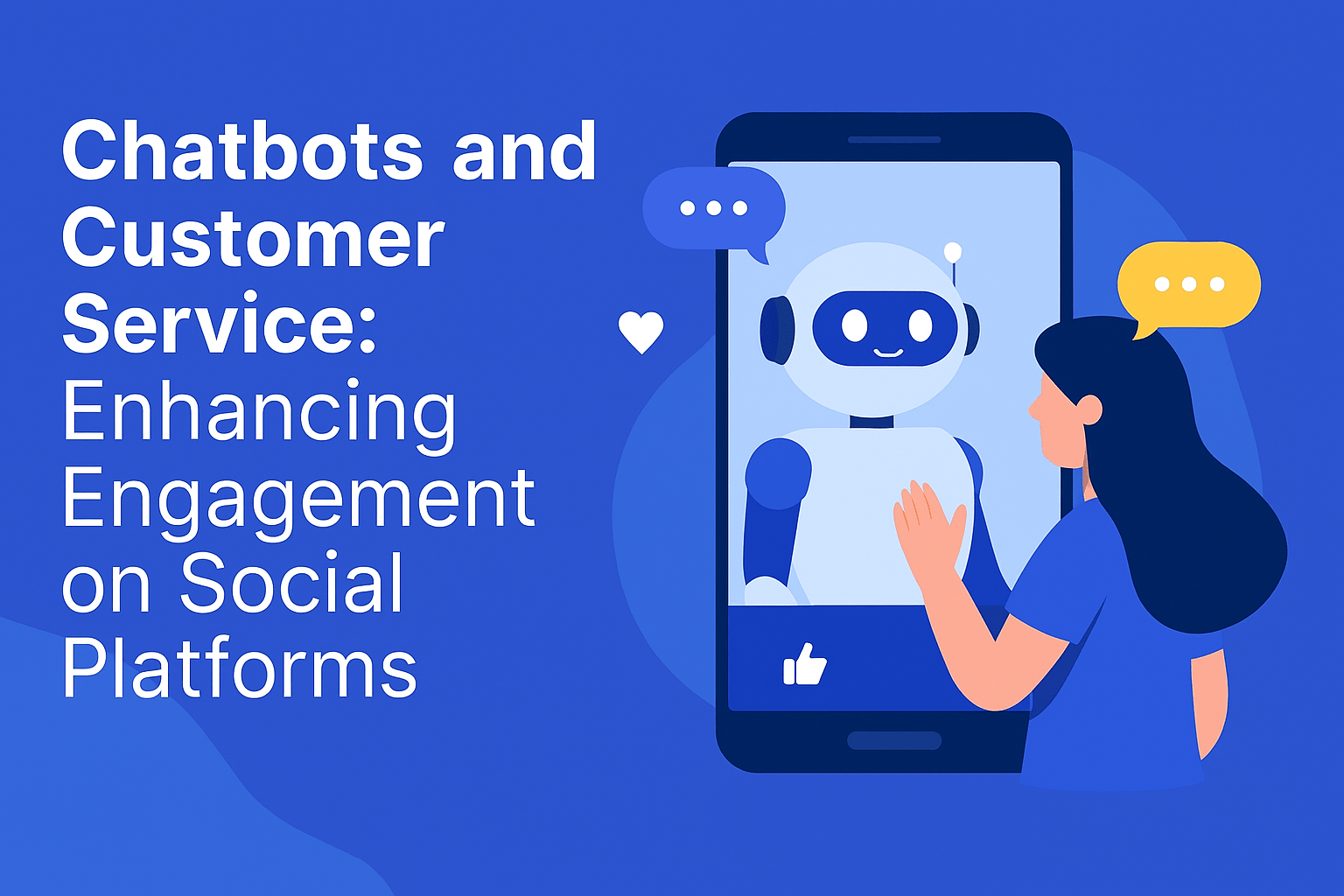Chatbots and Customer Service: Enhancing Engagement on Social Platforms

In the modern digital era, businesses are increasingly shifting their focus to social media to engage with customers. Social platforms such as Facebook, Instagram, WhatsApp, and Twitter are no longer just marketing tools; they have become essential channels for customer service. To keep up with the growing demands of online interactions, companies are leveraging chatbots and customer service solutions to provide instant, personalized responses. This article explores how chatbots are transforming customer engagement, their advantages, best practices, and strategies for maximizing their impact on social platforms.
What Are Chatbots?
Chatbots are automated software programs designed to simulate conversation with human users. They can interact via text or voice, answer questions, provide recommendations, and guide users through processes. In the context of social media, chatbots help businesses provide immediate responses, resolve queries, and enhance overall customer experience.
Types of Chatbots
-
Rule-Based Chatbots
Operate using predefined scripts and respond to specific keywords. Ideal for simple queries such as “store hours” or “return policy.” -
AI-Powered Chatbots
Utilize machine learning and natural language processing (NLP) to understand user intent and provide more dynamic, context-aware responses. These chatbots are perfect for complex queries or personalized interactions. -
Hybrid Chatbots
Combine rule-based logic with AI capabilities. They start with scripted responses and escalate to AI or human agents when necessary.
Importance of Chatbots in Customer Service
The rise of social media has dramatically changed customer expectations. Customers now demand quick responses, 24/7 availability, and seamless interactions. Chatbots bridge this gap by:
-
Providing Instant Support: Chatbots respond instantly to customer inquiries, reducing wait times significantly.
-
Enhancing Customer Experience: Personalized messages and relevant suggestions improve overall satisfaction.
-
Reducing Operational Costs: By automating repetitive tasks, businesses save on manpower and resources.
-
Gathering Insights: Chatbots track user interactions and provide valuable data for improving products, services, and marketing strategies.
Chatbots on Social Media Platforms
Social media platforms are ideal environments for integrating chatbots because they combine communication and engagement. Here’s how chatbots enhance service on major platforms:
Facebook Messenger
Facebook Messenger is one of the most widely used platforms for chatbot integration. Businesses can:
-
Automate FAQs and support tickets.
-
Offer personalized product recommendations.
-
Schedule appointments and reminders.
WhatsApp Business API allows companies to deploy chatbots for:
-
Sending order updates.
-
Handling customer inquiries.
-
Sharing promotions or alerts.
Instagram DMs with chatbots can:
-
Respond to common queries.
-
Provide links to products and services.
-
Engage users with interactive features like polls or quizzes.
Twitter chatbots help manage high volumes of mentions and replies:
-
Address customer complaints instantly.
-
Direct users to relevant resources or human agents.
-
Monitor trends and sentiment to refine engagement strategies.
Advantages of Using Chatbots in Customer Service
-
24/7 Availability
Unlike human agents, chatbots can operate round the clock, ensuring customers always receive support. -
Instant Responses
Chatbots reduce response time drastically, which improves customer satisfaction and brand loyalty. -
Scalability
Businesses can handle multiple customer interactions simultaneously without adding extra staff. -
Personalization
AI-powered chatbots can analyze user behavior, preferences, and history to provide customized responses. -
Cost-Effectiveness
Automating repetitive tasks frees up human agents to focus on complex issues, reducing operational costs. -
Data Collection
Chatbots track user queries and preferences, offering valuable insights for marketing and product development.
Best Practices for Chatbots in Customer Service
To maximize engagement and efficiency, businesses should follow these best practices:
1. Keep Conversations Natural
Use conversational language and avoid robotic replies. Personal touches, such as addressing the user by name, enhance engagement.
2. Use AI Wisely
AI-driven chatbots should handle complex queries, while simple questions can be automated using rule-based scripts.
3. Provide Human Escalation
Ensure customers can easily reach a human agent if the chatbot cannot resolve the issue. This prevents frustration and enhances trust.
4. Integrate With CRM Systems
Link chatbots to CRM systems to provide agents with context, history, and insights, allowing for seamless handovers.
5. Analyze and Optimize
Regularly review chatbot conversations to identify gaps, optimize responses, and improve overall performance.
Case Studies: Chatbots Enhancing Engagement
1. Sephora
Sephora uses chatbots on Facebook Messenger to offer personalized product recommendations, book appointments, and answer FAQs. This strategy has significantly improved user engagement and conversions.
2. H&M
H&M’s chatbot assists customers in finding the right clothing based on style preferences and size, increasing both satisfaction and sales.
3. Starbucks
Starbucks’ chatbot allows users to place orders via social messaging apps, providing a seamless experience that drives loyalty.
Common Challenges and How to Overcome Them
Challenge 1: Misunderstanding User Intent
Solution: Implement NLP-based AI chatbots and continuously train them using real user data.
Challenge 2: Limited Personalization
Solution: Use CRM integration and AI to offer more tailored responses.
Challenge 3: Over-Automation
Solution: Maintain a balance between automated responses and human intervention.
Future of Chatbots in Customer Service
The future of chatbots is bright, with AI advancements making them more intelligent and human-like. Emerging trends include:
-
Voice-Activated Chatbots: Enabling interactions via voice commands on social platforms.
-
Hyper-Personalization: AI predicting user needs before they ask.
-
Emotional Intelligence: Chatbots understanding user emotions to respond empathetically.
-
Integration With AR/VR: Enhancing immersive customer experiences on social platforms.
The integration of chatbots and customer service on social platforms has transformed the way businesses engage with customers. By providing instant, personalized, and 24/7 support, chatbots enhance customer satisfaction, streamline operations, and boost brand loyalty. To succeed, businesses must combine AI-driven automation with human empathy, continually analyze interactions, and adapt to changing customer expectations. As social platforms continue to evolve, chatbots will remain a pivotal tool in delivering superior customer experiences.
